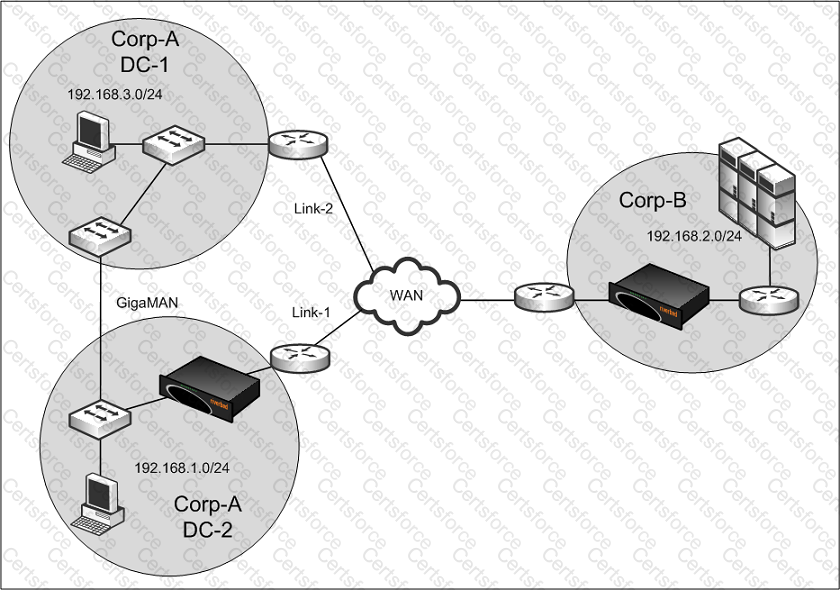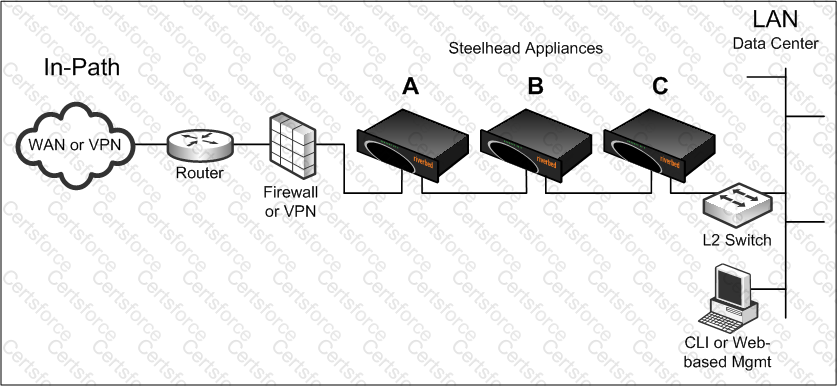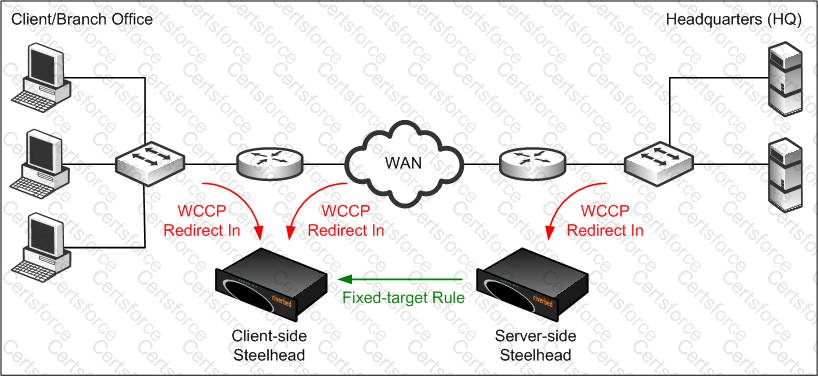To increase the high availability of a site at a remote office, you decided to install a second Steelhead appliance as an active/active serial cluster. However, after installing the second Steelhead appliance at the remote site, users started complaining about slow access to the data center. You have verified that this is not a duplex issue. At the data center location all users access the Internet which pass-through the Steelhead appliances. What is the most likely problem?
Refer to the exhibit.

Traffic going from Corp-A-DC-2 towards Corp-B will always use Link-1. Traffic from Corp-B back to Corp-A-DC-1 may traverse Corp-A-DC-1, over the GigaMAN before it reaches Corp-A-DC-2. No TCP connections are initiated from Corp-B to either Corp-A-DC-1 or Corp-A-DC-2. Unfortunately, the customer does not have any money to purchase any additional Steelheads. What are some possible fixes to ensure optimization occurs while Link-1 is operational? (If Link-1 ceases to function, optimization is not possible.) (Select 2)
What interface on the CMC appliance is required for the initial configuration?
The exhibit shows a data center side serial clustering deployment. In this organization, not every remote site has a Steelhead appliance deployed, and all remote locations will be connecting to the data center.

For connections initiated from the data center, there is a possibility that the Steelhead appliances shown in the exhibit will end up peering with each other, rather than the intended remote Steelhead appliances. Where are peering rules needed to prevent this problem?
A customer with a new physical in-path installation decides to turn on the optimization service during lunch time on a working day. This is done so that he can see if the users perceive any performance improvement. When starting the optimization service, he does not enable the in-path kickoff option. Assuming there were several already active connections when he starts the optimization service, how will the Steelhead appliances handle these existing connections?
Which of the following is true regarding the CMC appliance?
The default setting for “allow failure” in the Interceptor appliance version 2.0 is: (Select 2)
If a file is not optimized for more than one user at a time, this indicates:
After a new physical in-path installation, all applications appear to be slower. Adding a pass-through rule does not seem to fix the problem. Which of the following is the most likely cause of the problem?
Refer to the exhibit.

A user from one of your branch offices reports connections to servers are failing after a new deployment. The exhibit shows how the Steelhead appliances have been deployed. Which of the following will most likely fix the issue? (Select 2)